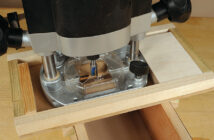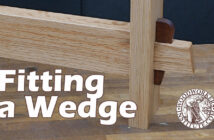How to Sharpen Your Joinery Plane Irons

Joinery planes can pose unique sharpening challenges even to those familiar with honing plane blades and chisels. Here’s how Charles Mak keeps his joinery planes keen and sharp
The cutters or blades of my favourite joinery planes, namely, the router plane, shoulder plane, skew rabbet plane and plough plane, need different sharpening techniques because of their smaller size, odd shape or compound angle on the edge. Besides freehand sharpening, here is how I can also produce the finest edges.
Sharpening systems
Waterstones are my go-to sharpening media, but I also use diamond stones to flatten stones and to remove nicks or change the bevel angle. In the wintertime and in my unheated shop in Calgary where the temperature can often drop below -20°C, I often resort to diamond lapping films to avoid any contact with water. Regardless of the system used, I prefer to resharpen the tools often (instead of restoring an edge after it has become totally blunt), and always treat them with a rust preventative afterwards.

I can choose the sharpening media according to the jigs and techniques used
Router plane
A router plane blade has a 90° turn at the base of the shaft. To get around the shaft, one approach – as advocated by the American woodworker Garrett Hack – is to bring the stone to the blade. Under this method, one hand is used to hold the blade bevel face down on the stone, and the other hand is used to stroke the stone to hone the bevel. I find this method more suitable for quick honing of the micro-bevel, for instance, as the stones can be tiring to the hand. An opposite approach is to set a 1,000 grit stone on a bench and press the bevel face against the stone, with the shaft off the stone. Stroke the blade back and forth on the stone until a burr is formed on the flat side. Then polish the flat side on the same stone. Finally, repeat the same sharpening steps with a 4,000 grit stone to complete the primary bevel. In my usual work, I have not found a need for honing the edge beyond 4,000 grit or for adding a micro-bevel.
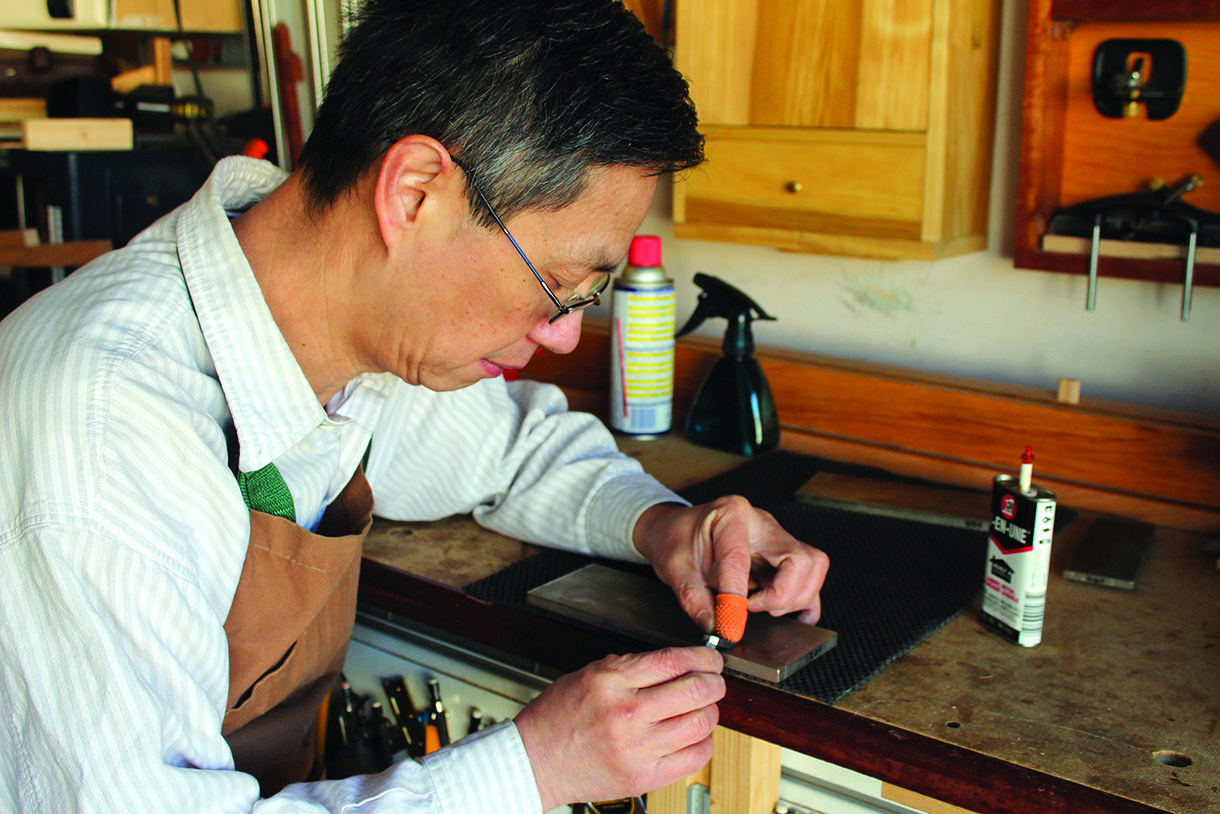
In a sitting position and with my elbow resting on the bench, I move my arms back and forth to hone the bevel face

Polish the flat side to remove the wire edge
Shoulder plane
With its blade the shape of a paddle, the main challenge of a shoulder plane blade is to keep the cutting edge at 90° to both sides when honing. Besides the option of using a commercial jig,
I have made a bevel honing jig – a hardwood block with a 30° bevel face matching the blade’s angle. The neck is cradled between two strips and is screwed down in position for accurate honing. After honing the primary bevel through the 1,000, 4,000 and 8,000 grit stones, I put a micro-bevel on the blade with the last polishing stone, by raising the back of the honing block slightly as I make the last few strokes. In resharpening, I freehand hone the micro-bevel only and remove the burr on the finest stone.
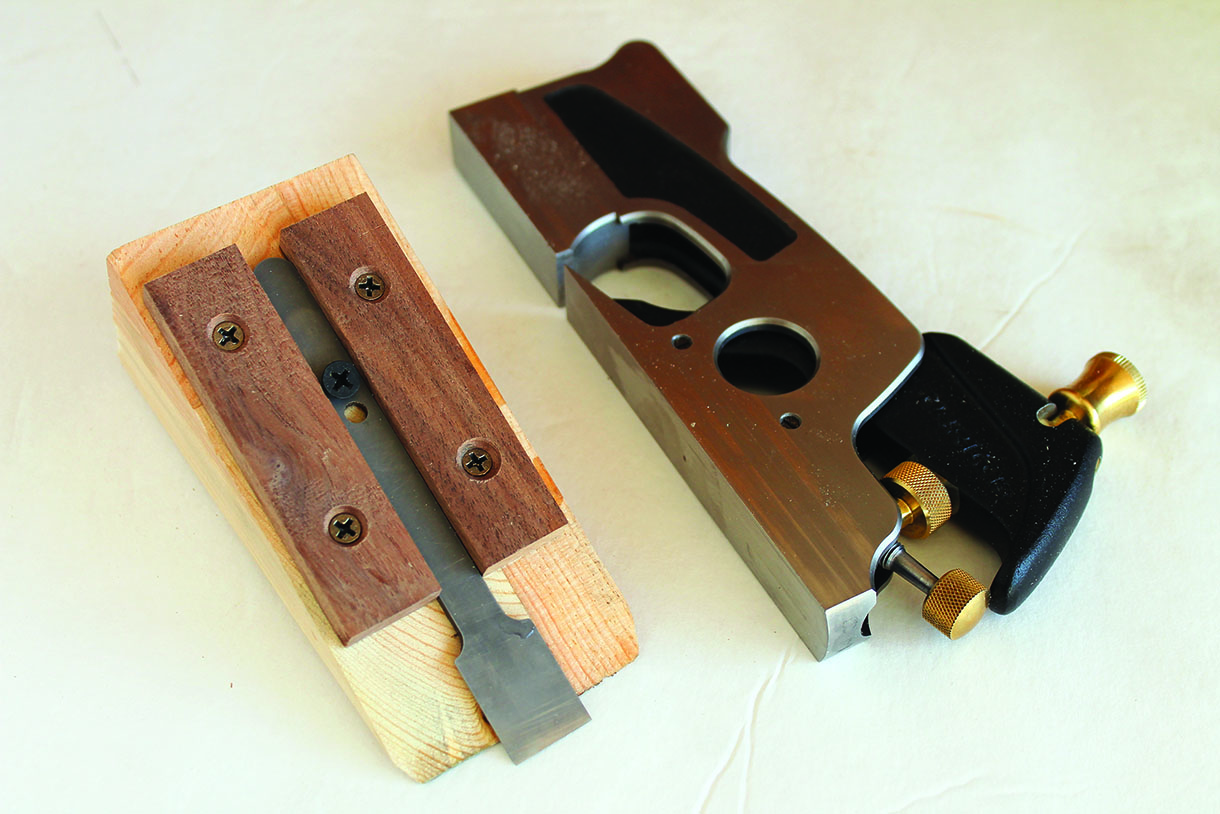
The strips and screw keep the blade in the proper honing position
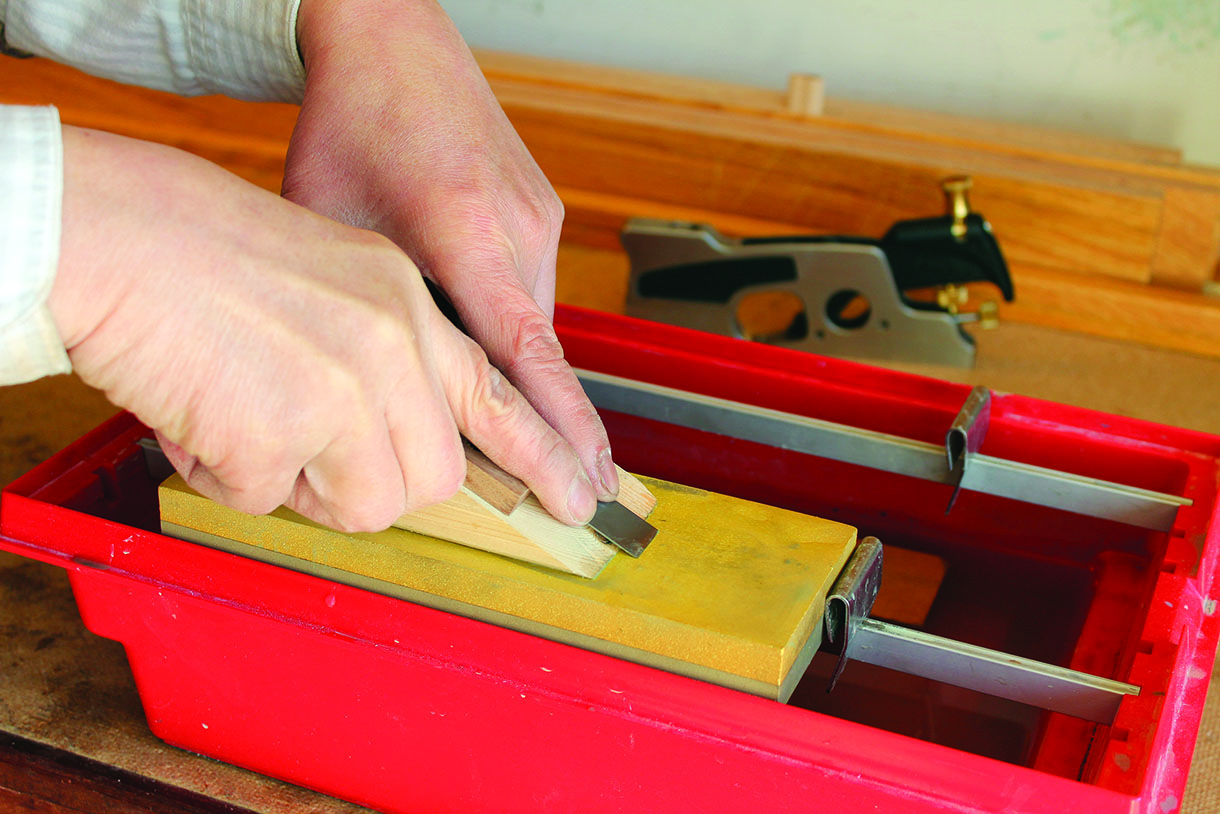
Hold the jig in both hands and keep your index fingers near the front as you push with even pressure
Skew rabbet plane
My rebate plane blade has a 22° skew, ground with a 30° bevel. When sharpening, it is critical to maintain the bevel angle as well as the skew angle of the blade, which allows the plane to cut right into the corner of a rabbet. I have two options: Use my commercial honing jig which also allows me to add a micro-bevel on the blade with ease, or go for a shop-made solution. The American author and teacher Christopher Schwarz uses a block with a skew channel and a bevel face to create the compound-angle setup for the blade. Lastly, when the nicker needs honing, simply lap its flat face on a fine stone.
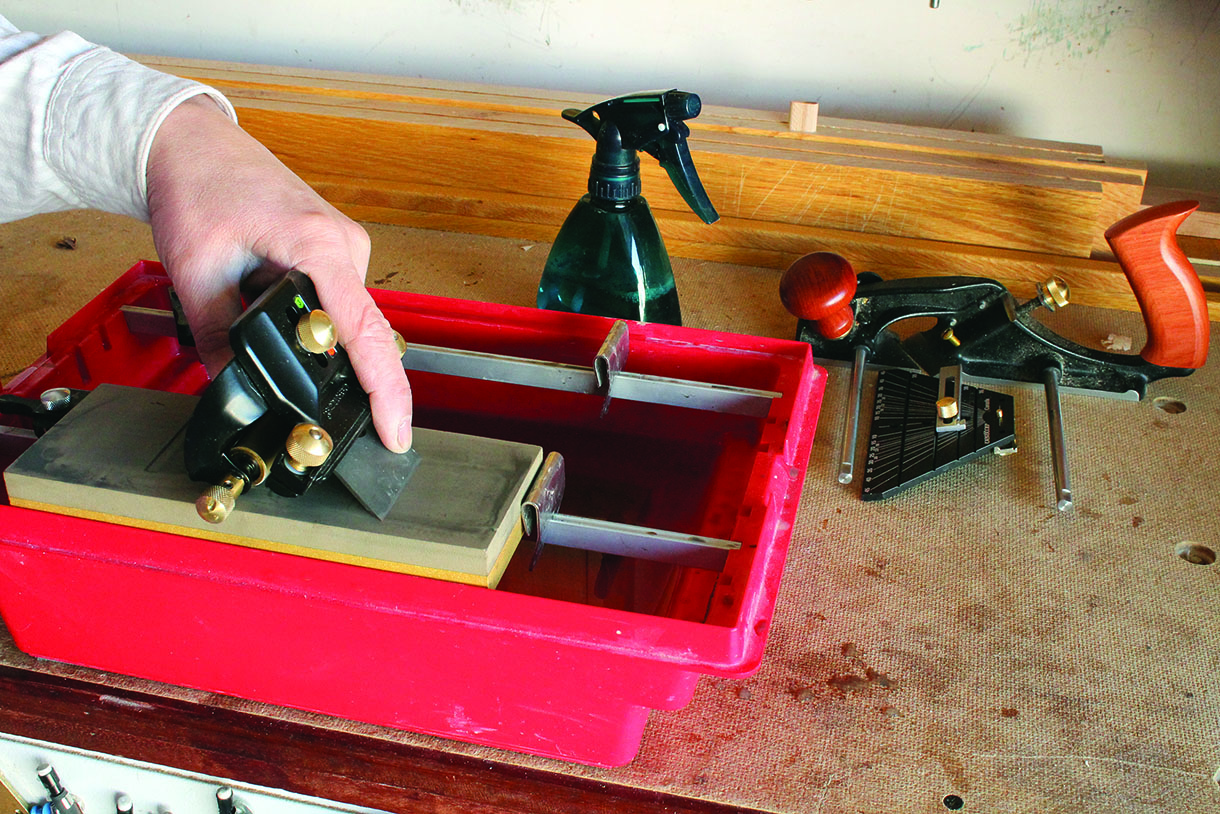
The registration accessory sets the blade at the precise bevel and skew angles in the honing jig
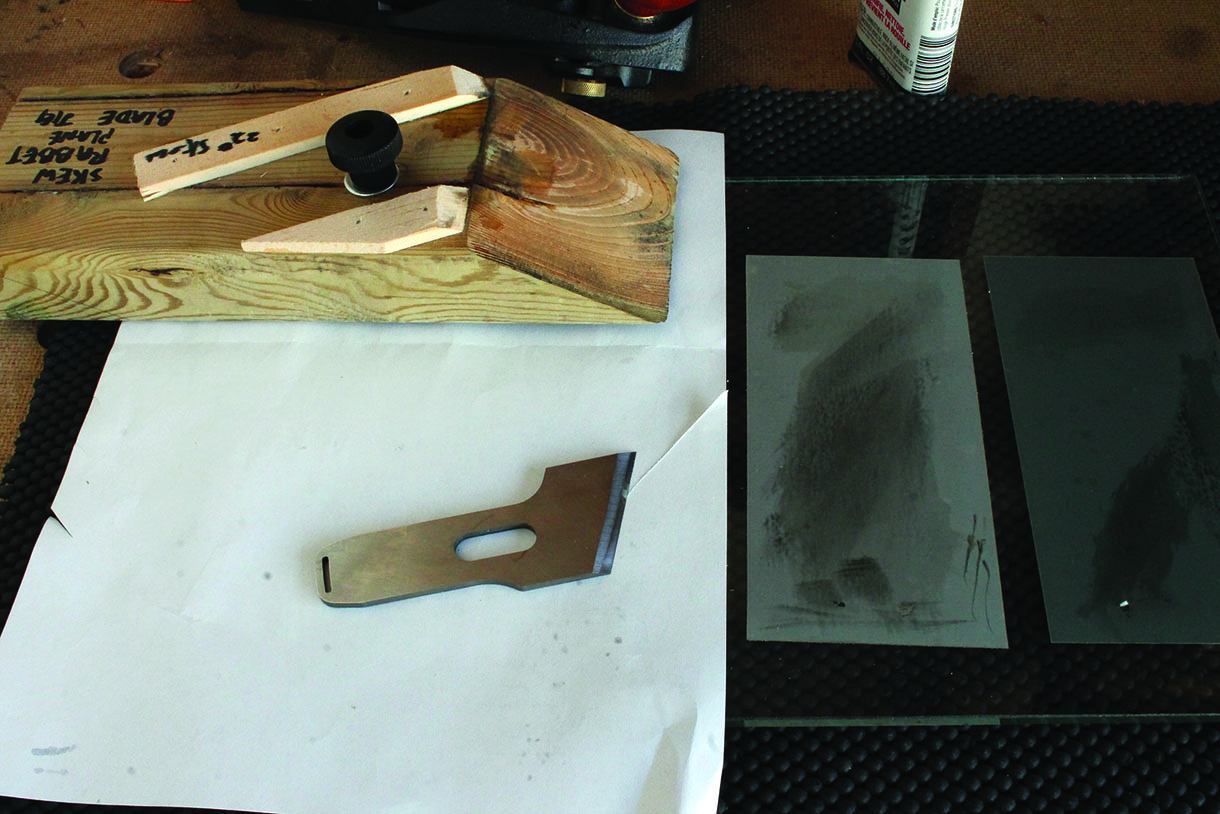
With the blade mounted on the jig and the jig clamped in a vice, stroke a diamond stone on the bevel face
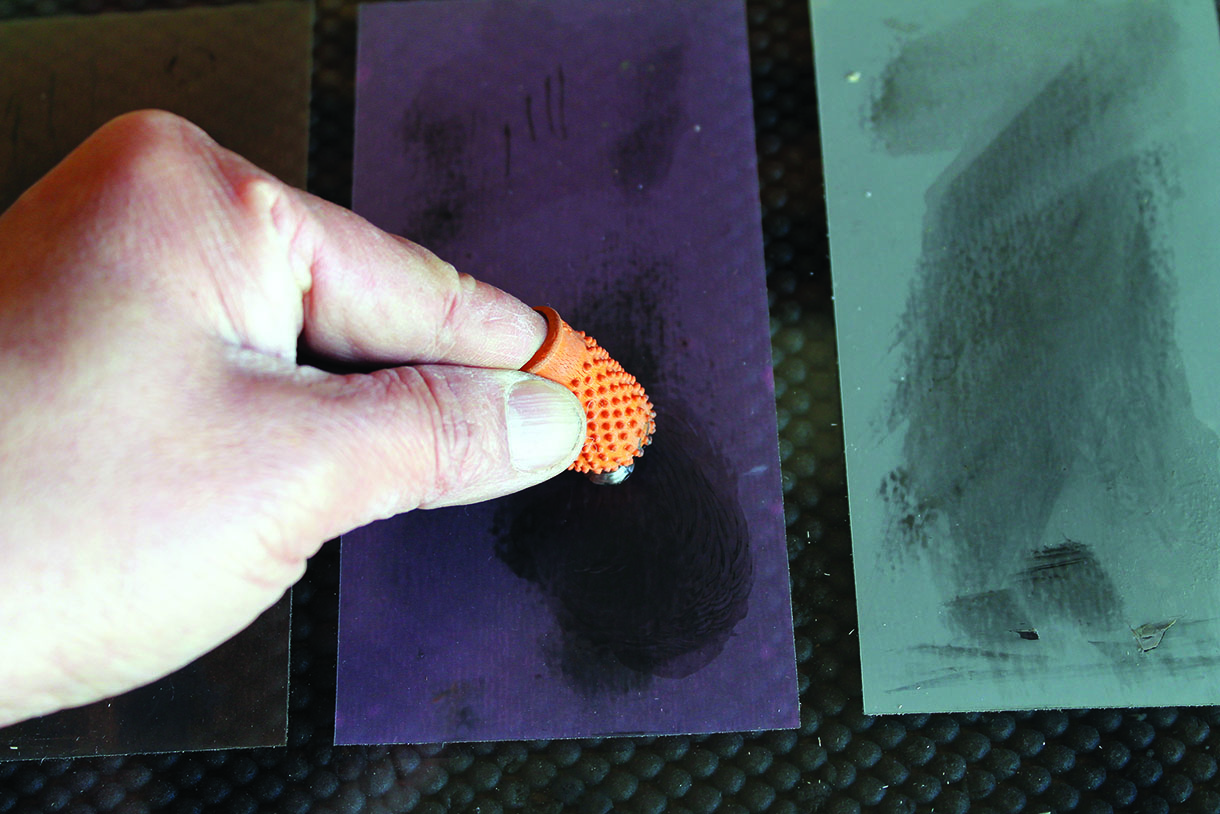
The rubber finger gives more grip on the nicker or other wheel cutters, and prevents finger burns
Plough plane
My plough plane can cut grooves and, when used with a conversion kit, tongues, too. The widths or sides of these blades must not be altered when sharpening to ensure the tongues and grooves will match. Again, we can use a commercial honing jig to sharpen the groove and tongue blades. Or, we can make what the late American author Aldren Watson called a grinding palm to hone those kinds of blades (details of his jig are given in his book on hand tools). When I am not using a commercial jig, I turn to my simple c-clamp jig to hone the groove or tongue blade. It is a block with a 35° bevel face and a hole drilled on the side, allowing the blade to be clamped on the bevel face. If I ever want to add a micro-bevel, I simply raise the back of the jig slightly in my final strokes on the finest stone.
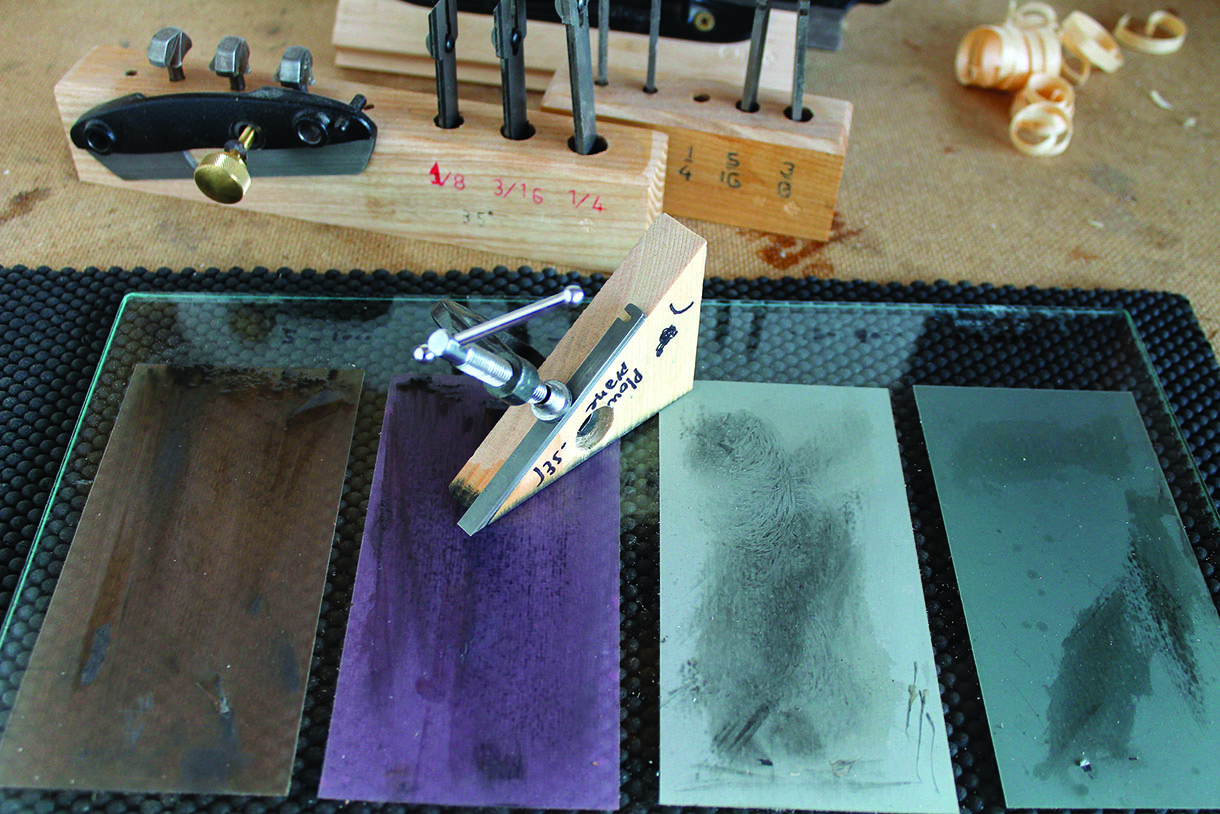
The design of the c-clamp jig can be adapted for honing different types of blades
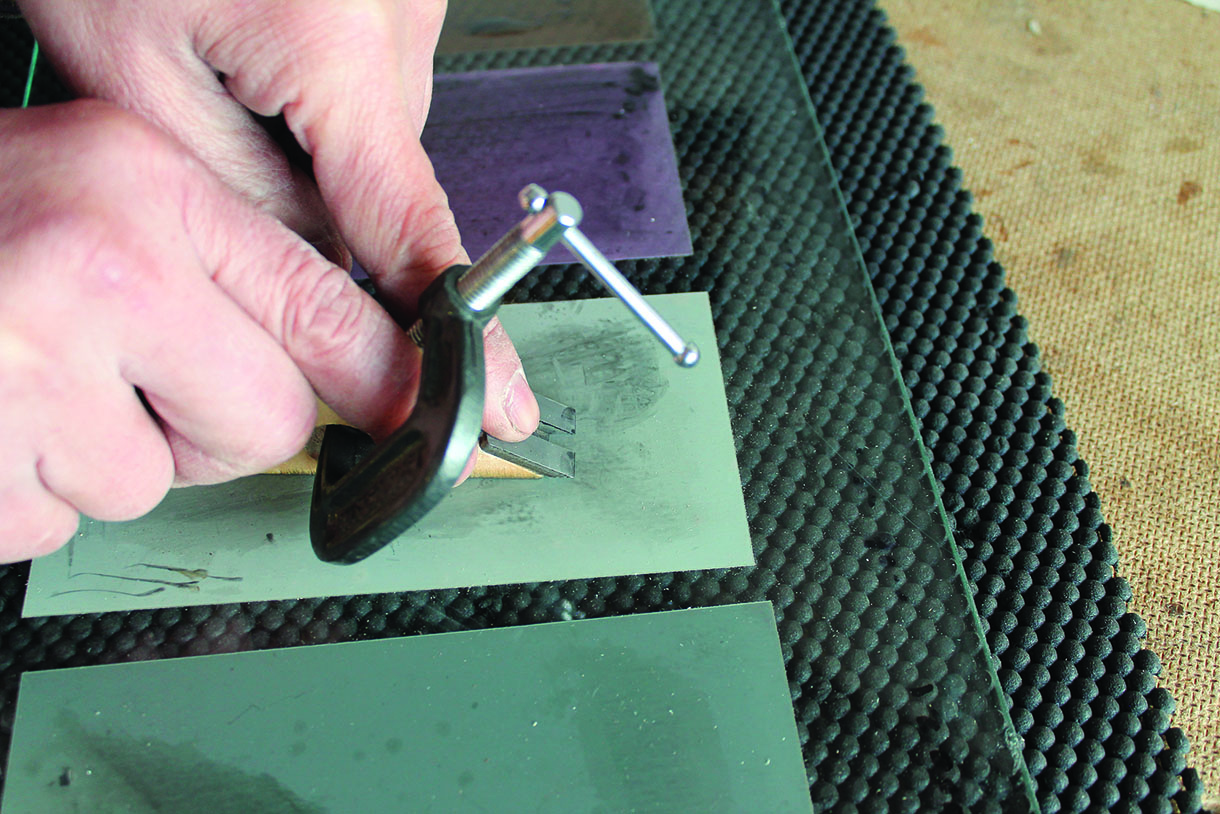
Lock the jig with both hands, pressing the index finger over the front and stroke

